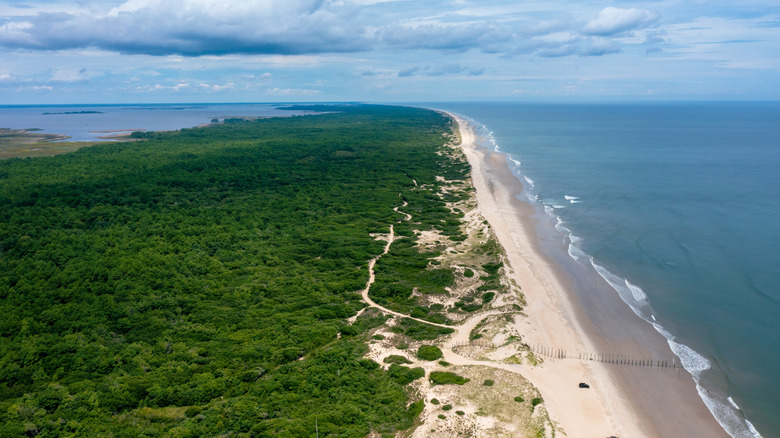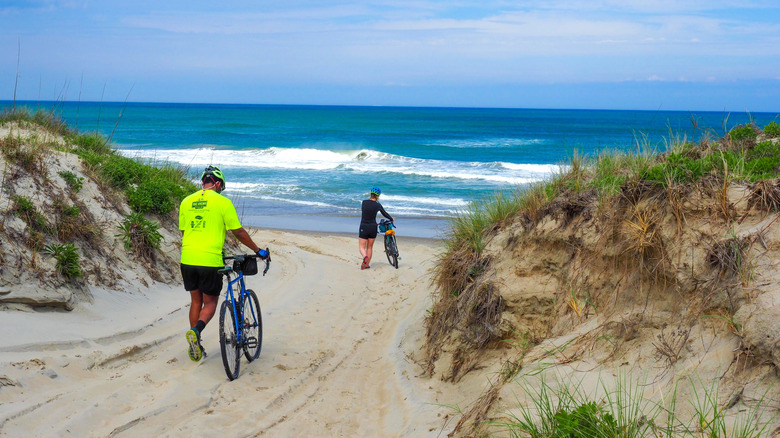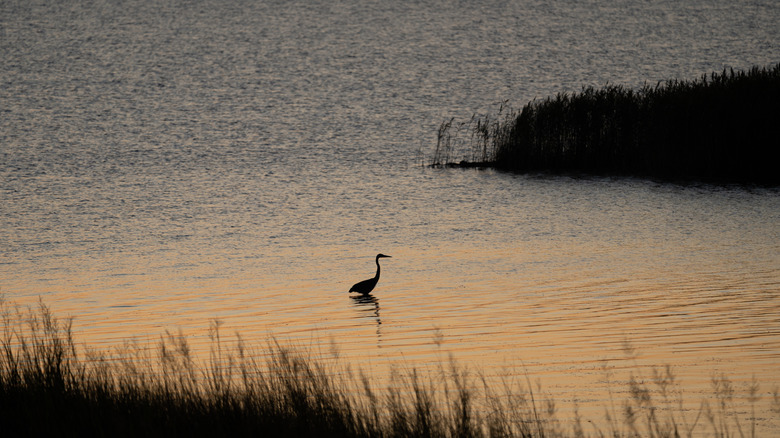Virginia's Secret Coastal Paradise Is A Secluded State Park Of Untouched Beaches And Wilderness
Virginia has no shortage of natural parks to entice visitors. You don't have to drive far from the nation's capital to enjoy the wild waters of Great Falls Park, and cycling enthusiasts love the tunnel of fall colors along the Virginia Creeper Trail in the Blue Ridge Mountains.
False Cape State Park, on the other hand, takes curious pride in being the least visited park in the state. That's because it is the most secluded and remote, accessible only at certain times of the year. In fact, it is one of the few undeveloped areas left along the Atlantic Coast.
Cars are completely prohibited. The only way to get there is by foot, bicycle, or boat. That makes it difficult for human visitors, but creates a paradise for people-shy wildlife. More than 300 species of birds make the park home, as do otters, white-tailed deer, loggerhead sea turtles, and wild horses, to name only some of the wildlife here. If you plan your visit well, you can immerse yourself in this natural refuge of Virginia's coastal wilderness.
Getting to False Cape
The first thing to know about False Cape State Park is that it is passionately committed to creating a home for wildlife. That means vehicles are not allowed at any time. Hikers and cyclists can access the park in the summer, but interior trails are closed from November until the end of March, meaning access in the colder months is only possible along the beach or by boat. Because of the delicate balance of wildlife, pets are only allowed on certain beaches in False Cape State Park. For example, they cannot be brought through the trails of the adjoining Back Bay National Wildlife Refuge. The park is most restrictive about overnight stays, with limited access for the most bare-bones camping. Campers must arrive on foot, bike, or boat to assigned campsites, though some camping is also allowed on the beach.
The most accessible way to visit False Cape is the Blue Goose Express, a wildlife tram tour. The tour takes about four hours, after which visitors can join an additional 1-mile guided hike. The Blue Goose Express requires a reservation, but it's the easiest way to immerse yourself in the wild nature of False Cape.
Birds, turtles, and dolphins
Expect plenty of wildlife, especially in the warmer months. It's a birdwatcher's paradise and the park can help to arrange special birding tours. Egrets, herons, and other wading birds, all of which can be viewed from observation platforms on Marsh Ridge Trail and the South Inlet trails, migrate here in the summer. Sea turtles also nest on the sands of False Cape in summer, so keep an eye out for loggerheads and Kemp's ridleys. Rangers monitor the nests, with volunteers invited to "nest sit" and safeguard hatchlings when they head for the sea. If you bring your kayak, you can venture into the water, where you might be lucky enough to see dolphins playing in the surf.
As in all cases with wildlife, keep your distance for their safety and yours. There are a few dangers in the park, including snakes. Hikers have come across poisonous cottonmouths and copperheads on the trails, so watch your step!
Given the restrictive camping, the best place to stay may be Sandbridge Beach right next door, an underrated vacation destination with plenty of accommodation options. There are no restaurants or facilities in False Cape State Park. Stock up for a picnic lunch before you go or treat yourself to a seafood dinner at Sandbridge Beach. After all, it's just down the coast from Tangier, America's soft-shell crab capital.


